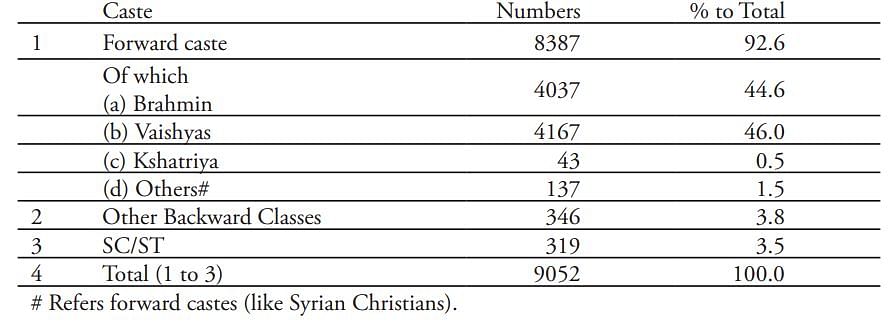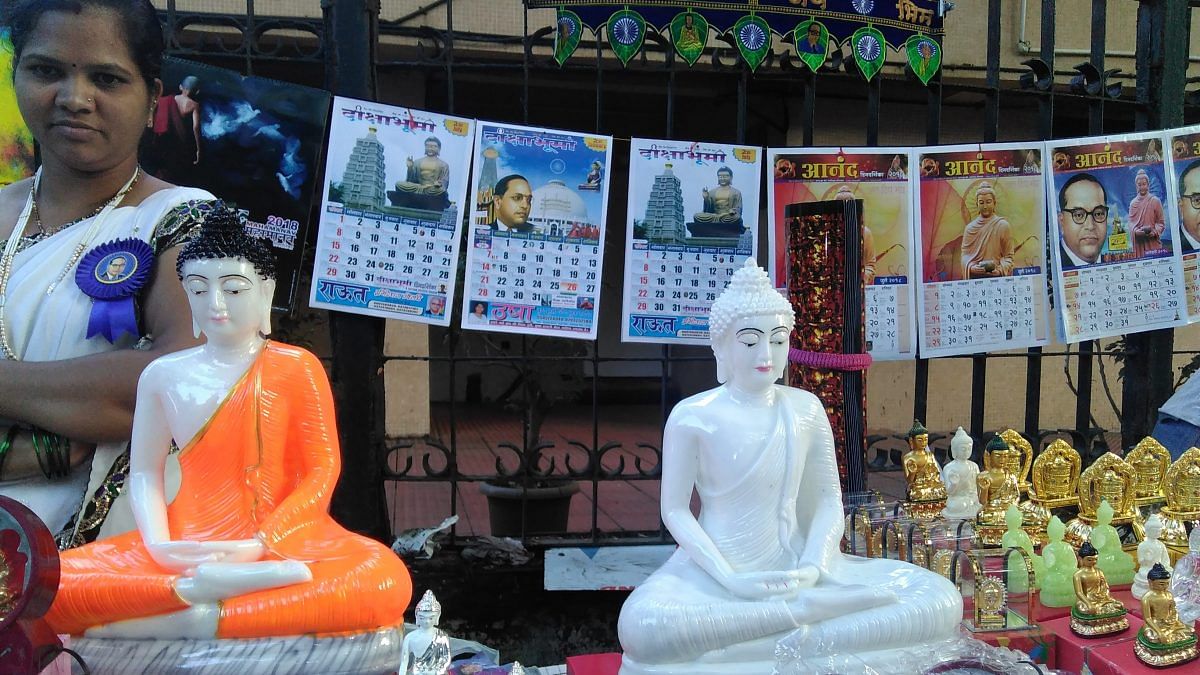Capitalism is defined by the growth of modernity, colonialism and extensive forms of oppressive mechanisms that are employed to extract maximum labour for minimal wages.
In the Dalit context, as the book Defying the Odds shows, it is the leftovers of traditional industrial scions where, in the absence of any takers, Dalits were called on to take over the unwanted units. Hence, something unwanted and unrelatable to the measures of capitalism is presented as Dalit capitalism. Dalits still have to garner the support of traditional capitalist moguls to fit into the brackets of capitalism. The tribe of Dalit capitalists can be best understood in terms of the various myths propounded by the capitalist world. It is arduously argued that they have vast purchasing power, which is clearly an exaggeration. Relative to their population, they are nowhere close to being called ‘influencers’ of the capitalist economy. Their contribution is invisible and doesn’t matter to the aggressive, casteist Indian capitalist set-up. Dalits do not own any real wealth in India. They are at best rentiers and at worst deprived occupants of the Indian capital. Their participation is severely restricted and manipulated. This new image of Dalit capitalists is a creation of the dominant castes to diffuse the potential risk of Dalit rebellion against capitalism. It is a clever plot to lure the oppressed class into the promises of capitalist dreams.
A comparative research of Dalit capital’s influence on the Indian economy along with the household expenditure of the Dalit middle class with those of the dominant castes would reveal telling data. Given their negligible presence and beggarly contribution, the rich Dalits’ median income would come out to less than the median income of the non-Dalit middle class in total. So, a rich Dalit is still poor and wretched in the grand scheme of the caste–capital programme. Over a third of Dalits are agricultural labourers with the number of landless increasing in the neo-liberal economy from 65.9 per cent in 1991 to 71 per cent in 2011. The assurance to a majority of Dalits in the neoliberal economy is clearly out of the purview of the managers of the neo-liberal order.
The term ‘Dalit’ is analogous to anti-oppression. The defining trait of the Dalit community is to resist oppression of any form. And capitalism chooses to continue oppression. This juxtaposition is unfeasible and the two cannot go hand in hand. Dalit households have been protesting against the capitalistic sensibilities of greed. If someone from the community attempts to galvanize Dalit interests for individual profitability, that person is not well regarded and is even socially ostracized. This form of idiomatic expression testifies to the Dalit’s resistance to the nefarious and dissipated life introduced by the dominant-capital-centred culture. There is a mimicry of the pleonexia of the dominant castes who retain their hegemony by oppressing human and natural lives for petty profit.
Also read: ‘You don’t look Dalit’ and other things ‘upper castes’ must stop saying to Dalits immediately
Dalit Indian Chamber of Commerce & Industry (DICCI)’s aim is to fight caste with capital—for caste and capitalism cannot coexist, goes the mantra. Capitalism, here, is seen as an egalitarian project that seeks to launch a utopia of mutual gain that relies upon an equitable exchange. Meaning, there will be a moment of Dalit capital forces sitting together and on an equal plane to negotiate with the oppressor. This assertion needs qualification. If understood within a broader global capital mechanism, the résumé of neo-liberal capitalism is not impressive. For it has proven to uproot indigenous lives by replacing them with so-called ‘civilized notions of modernism’, inaugurating unending chapters of chronic disaster. Caste capitalism’s strong belief lies in the fact that capitalism will uproot the heinous and rigid caste system, although it is nostalgically upheld by the beneficiaries of caste. History again mediates to offer an alternative vision, almost as déjà vu to the current exciting possibilities. Lower-caste capital already existed in the nineteenth century. Jotirao Phule’s family belonged to the landed propertied class and won lavish contracts from the state. Phule himself was a private contractor and entrepreneur in his later life and owned 200 acres of land in the busy suburbs of Pune. He too failed dismally to amenably navigate through the reconstruction project of caste society—the superstructure of the Indian condition.
Demands for social rights were raised time and again by a handful of upwardly mobile owners of miniscule capital in former Untouchable communities. In the Gazetteer of the Bombay Presidency published in 1880 and a report on the Land Revenue Settlement written in 1899 there is evidence of growing entrepreneurial activity among the Mahar (formerly Untouchable) communities of Maharashtra. The Mahars started ‘gathering capital as petty contractors and moneylenders… manag[ing] their business without any help of high caste clerks’. ‘The rise of Mahars will probably be one of the features of social change,’ states the Land Revenue Settlement report.
A similar situation was occurring in north India among the Chamar (leather worker) capital enterprise which protested against its position in the traditional caste setup. For the Shudras—the artisanal and landowning castes lower than all others but above Dalits—Sanskritization—a practice of following the rituals of the dominant castes in order to climb up the traditional order—amounted to social change. What it in fact did was reproduce the structure of oppression idealized in Brahminical discourse. Even with the Mahars and Chamars becoming petty capital owners the situation of the community is starkly depressing. While some Mahars and Chamars have achieved wealth in certain regional contexts, the relative outcome of their capitalist experiences is not indicative of the majority of the community because they still have to bear the brunt of the lowest-paying jobs and worst form of atrocities. Even with their newly acquired economic strength, aided by intellectual temerity, they have not been adequately successful in making a dent in the social oppressions they suffer. This is because caste power plays into the actions and reactions they receive from other non-Dalit communities.
Clearly, then, capitalism has not proved to serve the rightful purpose of eradicating social divide, nor did the twentieth-century form of state socialism. That is why Ambedkar’s call for a ‘modified’ version of state socialism remains the order of the day wherein the state takes control of important industries and agriculture to regulate the flow of capital and the surplus produced in the process.
Aseem Prakash’s study of Dalit capitalism shows that Dalits continue to undergo multilayered exclusion. The economy is situated within dense structures of society. The social mandate decides economic functioning. The community networks that often work in the entrepreneurial chain are not in favour of Dalits. This affects Dalit capital owners doubly: first, due to the lack of Dalits in the network chain they are unable to cross over easily, and second, dominant-caste entrepreneurs use their own networks to keep Dalits from accessing the market. When it comes to taking bank loans and dealing with other state-owned institutions, Dalits have to undergo humiliation only to finally be left with one option: being co-opted by dominant-caste capital. In these partnerships, the dominant-caste person uses his/her influence to command business prospects while doing little work compared to the Dalit. In this transaction too, the ‘social relations’ that Kancha Ilaiah argued about in his Post-Hindu India are absent.
Also read: Caste to be kept out of Modi govt’s pilot Socio-Economic Caste Census this year
Social relations are important to regulate the dominance of caste hegemony in the foundation of capitalism. In the absence of established social relations there is limited scope for empathizing with other caste groups. Due to the lack of conversation with other groups in a commercial exchange, the buyer and the seller, the worker and the owner do not have reasons to establish norms of human relationality, thereby deepening the ignorance of other group. Therefore, in the absence of social endosmosis, capitalism in India finds its immoral ethic. Sharing of space and capital does not allow Dalits to create social queering. A national television reporter once shared his experience of reporting on Dalit capitalists in Gujarat. A Dalit real estate businessman had to ‘partner’ with a Patel (dominant caste) in order to retain his presence in the market. All the work was done by the Dalit but the name of Patel was used for better marketability. The profits were divided equally. The story doesn’t end here. Patel would seldom touch the money given by the Dalit for transactions. He would prefer it to be kept on the table to avoid physical contact with the stash of hard cash. When the journalist pressed Patel further, ‘usne camera par thoonk diya [he spit on the camera]’ in his Dalit partner’s name, informed the journalist. The partnering here meant very little blurring of caste lines. The market effectively worked with and retained the caste structure. Irrespective of the new inventions in the market economy, the caste syndrome continued to be unaffected. The data on the control of capital, for example, says it all.
Table 1: Caste-wise Distribution of Indian Corporate Board Members (2010)

Table 2: Caste Diversity (Blau) Index of Indian Companies—Descriptive Statistics (2010)

In various businesses too, Dalits have to face entrenched hostility. This prevents them from occupying strategically important positions in the market. On top of this, due to the hostility, Dalits have to sell their goods at lower margins in order to fit into the market chain. This costs them crucial profits. Working in such adverse conditions puts Dalits in a vulnerable position where their caste identity remains a primary roadblock within the current neo-liberal economy. This unwelcoming hesitation, or to paraphrase, Amartya Sen’s idea of ‘unfavourable inclusion’, plays an important role. The bland promises of the neo-liberal regime seem unable to surmount the caste hegemony. Growing wage gaps and loosening of state control over public resources and public capital put marginalized sections like Dalits at the threshold of insecurity. Neo-liberalism has failed the Dalit enterprise.

This excerpt from Caste Matters has been published with permission from Penguin Random House India.






